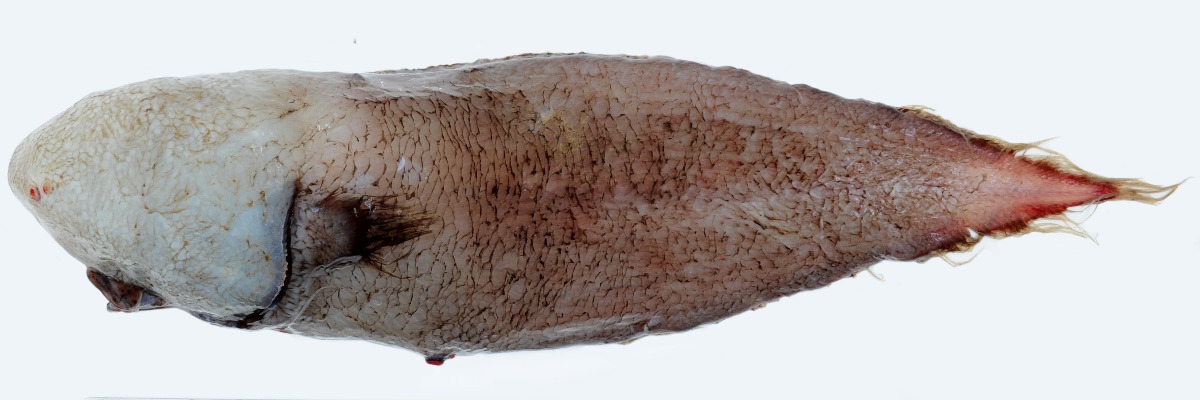Aquatic scientific names in the news …
2nd June 2017
The Faceless Cusk
During the course of a new deep-sea research voyage called Sampling the Abyss a fish not seen since the Challenger expedition of 1872–76 has been collected. A species of Cusk-eel that has been described as faceless owing to its lack of visible eyes was collected on day 16 of the expedition. It was brought up from a 4000 metre deep trawl from a sampling site off Newcastle, New South Wales. Initially it was thought to be a new species but the latest from John Pogonoski of CSIRO Australian National Fish Collection seems to indicate it to be the same species as from the Challenger expedition.
 Newly acquired specimen of Faceless Cusk. Image: John Pogonoski, CSIRO
Newly acquired specimen of Faceless Cusk. Image: John Pogonoski, CSIRO
Sampling the Abyss is a month-long voyage aboard the RV Investigator exploring the abyss off eastern Australia for the first time – an almost unexplored habitat 4000 metres below the surface. The abyss is the largest and deepest habitat on the planet, covering half the world’s oceans and one third of Australia’s territory, but it remains the most unexplored environment on Earth. Until recently only a handful of samples had been collected from Australia’s abyss. The expedition expects to find a wide range of animals, including new species, of fish, starfish, molluscs, crabs, sponges, marine worms and sea spiders. More information about the expedition can be found at Blogging the Abyss.
 Typhlonus nasus. Image: Günther (1887) Rept Sci. Res. HMS Challenger 22(57): Pl. 25
Typhlonus nasus. Image: Günther (1887) Rept Sci. Res. HMS Challenger 22(57): Pl. 25
The Challenger expedition of 1872-76 laid the foundations for the science of oceanography. At the behest of Charles Wyville Thomson the Royal Society obtained the use of HMS Challenger from the Royal Navy for an expedition to survey and explore the world’s oceans. The ship was modified for scientific work and equipped with laboratories for natural history and chemistry. The expedition, led by Captain George Nares under the scientific supervision of Thomson himself, travelled around 130,000 km over the course of the voyage.
The results were published as the Report Of The Scientific Results of the Exploring Voyage of H.M.S. Challenger during the years 1873-76. It cataloged over 4,000 previously unknown species and was described by John Murray (who supervised the publication) as “the greatest advance in the knowledge of our planet since the celebrated discoveries of the fifteenth and sixteenth centuries”.
Etymology
Typhlonus nasus Günther, 1878, the Faceless Cusk
Typhlonus – Greek, Typhl-, typhlos (τυφλος), blind; -onus, onos (ονος), hake (classical – Aristotle).
nasus – Latin, nose. Likely referring to the protuberant snout.